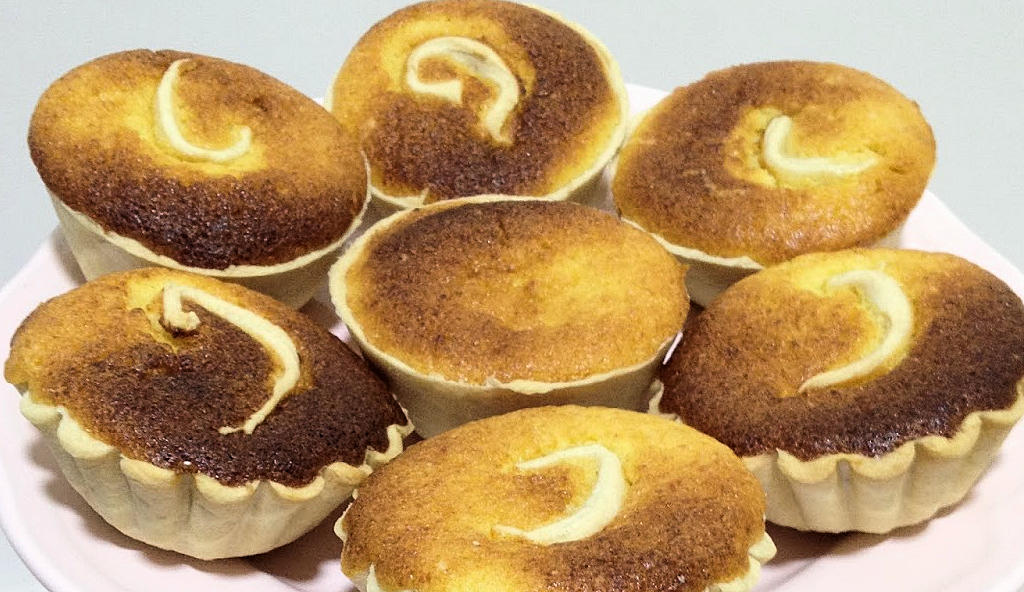The exact origins of Queijadas de Gila remain shrouded in mystery, but historical sources suggest a connection to the conventual sweets that emerged during the Middle Ages. In the tranquil seclusion of monasteries, nuns honed their culinary skills and created heavenly pastries using luxurious ingredients such as eggs, sugar, and almonds. These exquisite sweets, crafted with dedication and creativity, became a delicacy cherished by nobles, clergy, and the general public. Today, their legacy lives on in the form of renowned Portuguese pastries like pastéis de nata, ovos moles, pão de ló, and, of course, Queijadas de Gila.
The main star of the show, gila squash, has an intriguing history of its own. Native to South America, it was brought to Europe by Spanish explorers during the 16th century, ultimately finding its way to the shores of Portugal. The gila squash features a robust, green skin adorned with white spots and conceals a snow-white flesh flecked with black seeds. While the squash itself may not possess an inherent sweetness or remarkable flavor, it possesses a remarkable ability to absorb and accentuate the flavors of accompanying ingredients. Furthermore, it offers a host of nutritional benefits, boasting high fiber content, vitamin C, and essential minerals.
Creating the masterpiece that is Queijadas de Gila is a labor of love and craftsmanship. The process begins by cooking the gila squash in water until it reaches a tender consistency. Once cooked, the squash is peeled and shredded, and then cooked once more with sugar until it transforms into a luscious jam-like mixture known as Doce de Gila or gila jam. This delightful filling can be enjoyed on its own or used as the heart and soul of these pastries.
The pastry dough for Queijadas de Gila is meticulously prepared, incorporating a harmonious blend of flour, oil, water, and salt. The ingredients are skillfully combined and kneaded until the dough reaches a smooth and pliable texture. Subsequently, the dough is rolled out into thin layers, creating the canvas on which these edible masterpieces will come to life. Circular portions of the dough are carefully cut and then adorned with a generous spoonful of doce de gila, along with a sprinkling of ground almond and a touch of egg yolk. The dough is then gracefully folded over the filling and sealed at the edges, forming the characteristic half-moon shape that defines Queijadas de Gila.
Lisbon.vip Recommends
Queijadas de Gila are best savored at room temperature or slightly warmed, allowing the nuances of their flavors to fully develop. These delectable pastries are not limited to a specific time of day; rather, they are enjoyed as a delightful dessert or a satisfying snack, perfect for any moment of indulgence. During the festive Christmas season, Queijadas de Gila take center stage, gracing tables alongside an assortment of traditional sweets like Bolo Rei, Rabanadas, Sonhos, Aletria de Cortar a Faca, Arroz Doce, and Broa de Mel. Together, they create an enchanting tapestry of flavors and textures that embody the spirit of Portuguese holiday traditions.
When visiting Lisbon, embarking on a culinary journey that encompasses the city's rich heritage is an essential experience. Exploring the intricate flavors and artistry behind Queijadas de Gila provides a tantalizing glimpse into the soul of Portuguese cuisine. With every bite, you'll taste the remarkable history, cultural influences, and passion that have shaped these delectable pastries throughout the centuries. So, let yourself be swept away by the allure of Queijadas de Gila, immersing yourself in a world where flavors tell stories and tradition intertwines with the present, creating a truly unforgettable experience.



